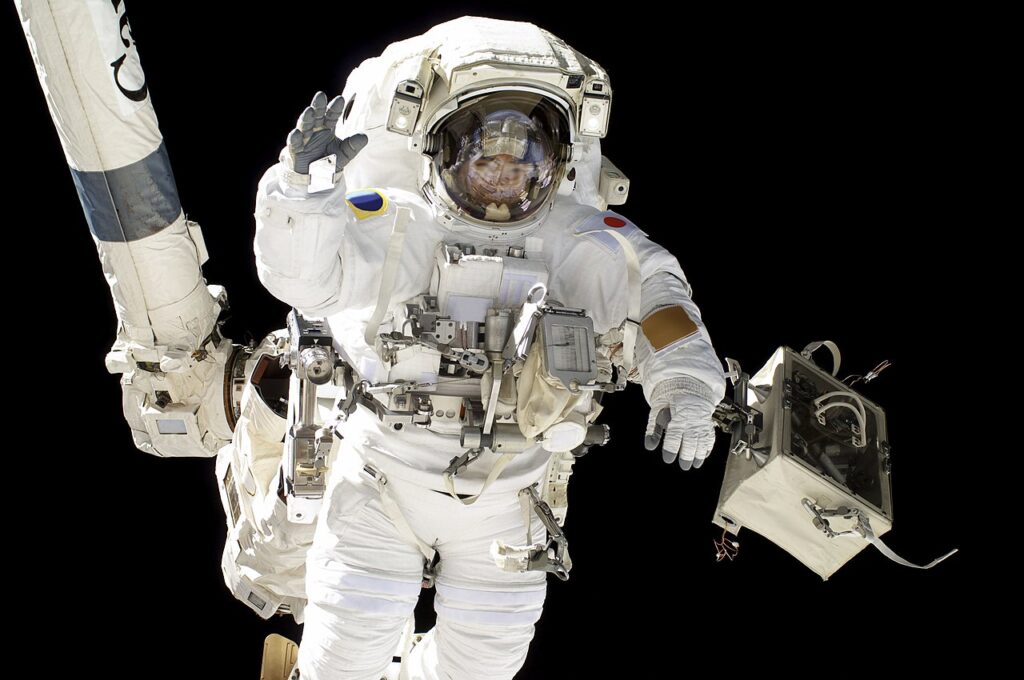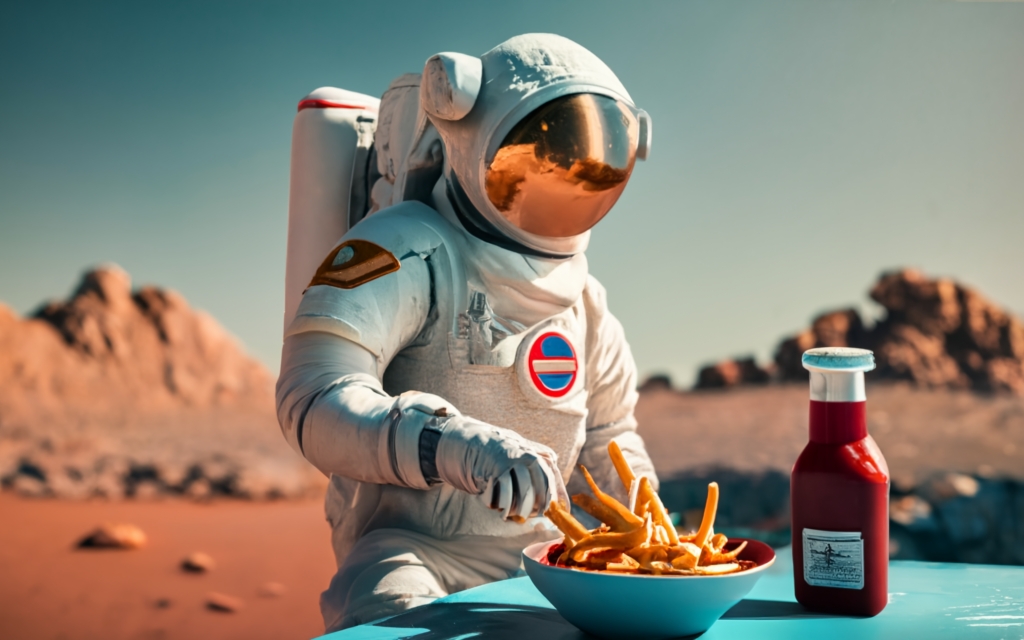
Image generated using Ideogram AI.
By Mariana Meneses
Scientists have successfully fried potatoes in space, suggesting that cooking in low gravity conditions is feasible for astronauts.
Researchers from the Aristotle University of Thessaloniki, in Greece, have conducted experiments on potato frying in hot oil during the short duration low gravity conditions achieved in the European Space Agency’s parabolic flight campaigns. They found strong evidence suggesting that frying in space is possible.
Imagine you’re cooking french fries. You drop a slice of potato into hot oil, and it starts to fry. Bubbles form on the potato slice and then float away. That’s pretty much what happens when you fry food on Earth. The scientists wanted to know if we could do the same thing in space, where there’s no gravity.
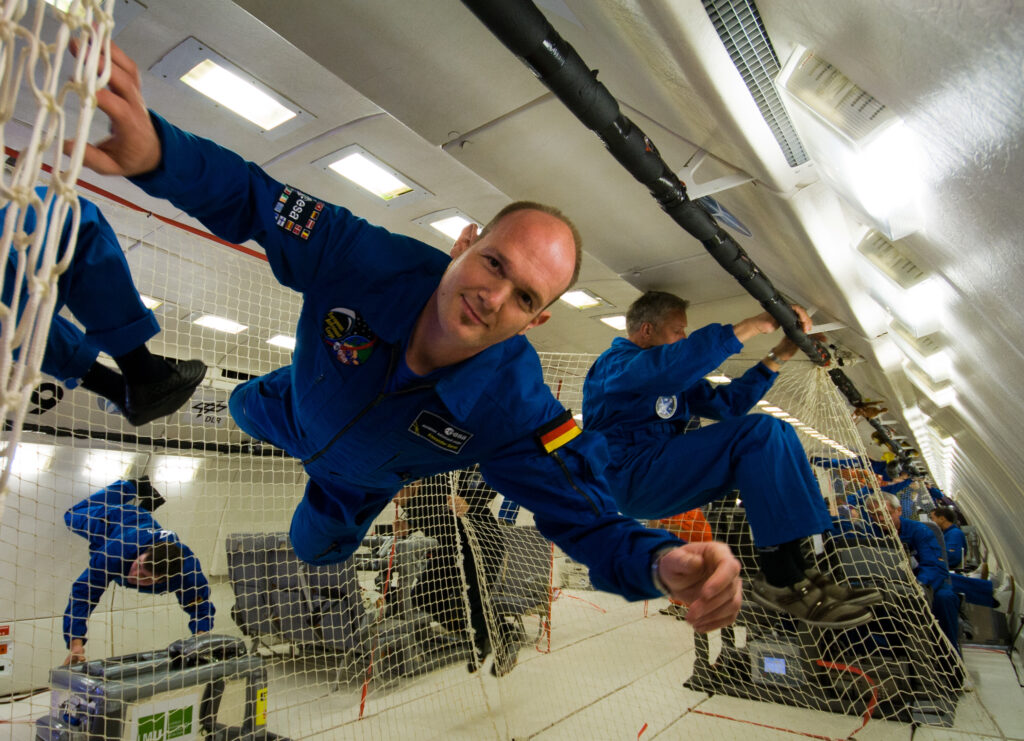
“Alexander Gerst, German ESA astronaut, having a taste of weightlessness aboard an Airbus A300 Zero-G during a parabolic flight.” Image: NASA .
“Parabolic flights reproduce gravity-free conditions in an aircraft by alternating upward and downward arcs interspersed with level flight. They provide a microgravity environment for scientists to conduct research without going into space.” (AirZeroG)
The researchers built a machine that could fry potatoes during an airplane flight that produces near-zero gravity for about 20 seconds by flying up and down at 45-degree angles. hey found that the bubbles still formed on the potato slice and floated away, just like on Earth. So, it looks like astronauts might be able to cook up some fresh food in space in the future, instead of just eating stuff that’s been dried out and rehydrated.
However, they may want to avoid deep-fried food, as nutrition could potentially be even more important in space than on Earth.

Image generated using Ideogram AI.
A paper published in the journal Nature in August 2023 showed that astronauts lose bone marrow fat after space travel, potentially influencing red blood cell production and bone health upon return to Earth.
This study builds on the team’s previous research which showed that during space travel, astronauts’ bodies destroyed 54% more red blood cells than they normally would on Earth, resulting in what is known as space anemia.
“Thankfully, anemia isn’t a problem in space when your body is weightless, but when landing on Earth and potentially on other planets or moons with gravity, anemia would affect energy, endurance, and strength and could threaten mission objectives,” explained Professor Guy Trudel, a researcher at the University of Ottawa.
In the new research, Professor Trudel and colleagues analyzed MRI scans of the bone marrow of fourteen astronauts at multiple time points before and after a six-month mission at the International Space Station.
They found a 4.2% decrease in bone marrow fat about a month after returning to Earth – which gradually returned to normal levels.
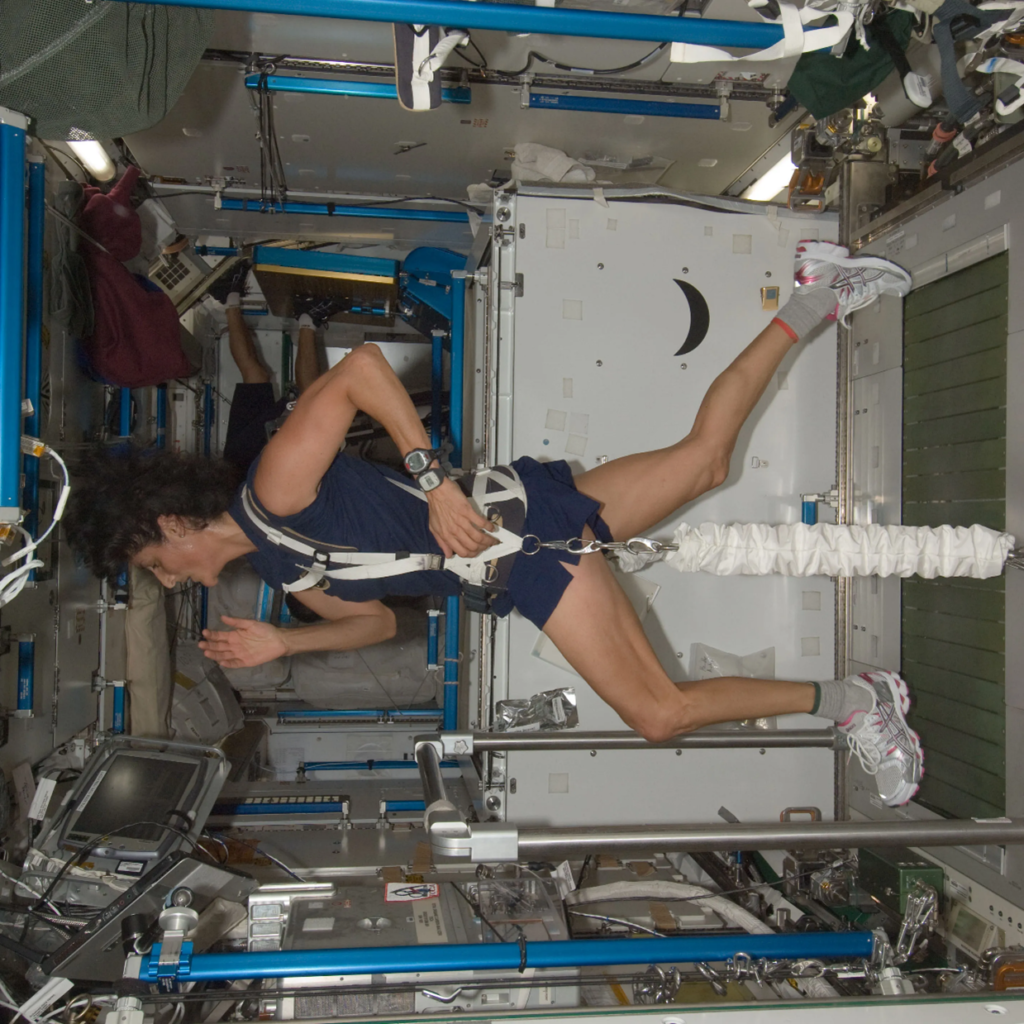
NASA astronaut exercising in zero gravity. Image: NASA Podcast
NASA’s podcast; episode “The Zero-G Workout”
Interestingly, the authors suggest that younger astronauts may have an increased ability to harness the energy from bone marrow fat, and that female astronauts’ bone marrow fat increased more than expected after a year. The study may also provide insights into conditions like osteoporosis, metabolic disorders, the aging process, and cancer, all of which exhibit links to elevated levels of bone marrow fat.
This “space anemia,” has been observed since the first space missions, but the reasons behind it were not clear until now.
Previously, it was thought to be a short-term adaptation of the human body, but the new research shows that the consequences last at least a year after returning to Earth.
While on Earth, our bodies create and destroy around 2 million red blood cells per second, astronauts lost 3 million red blood cells per second during their six-month space missions. This discovery could have major implications for future longer-term space travel.

Image generated using Ideogram AI.
The recent breakthrough in space frying experiments opens exciting possibilities for astronauts to enjoy fresh meals during long-term missions, potentially enhancing their overall well-being.
However, as we journey further into space, the importance of maintaining astronaut health and nutrition becomes even more evident. Space anemia might be only one of many health issues that different atmospheres could pose on the human body, with far-reaching consequences on energy, endurance, and mission success.
As we venture toward other planets and beyond, understanding and addressing these challenges will be paramount in shaping the future of human space exploration.
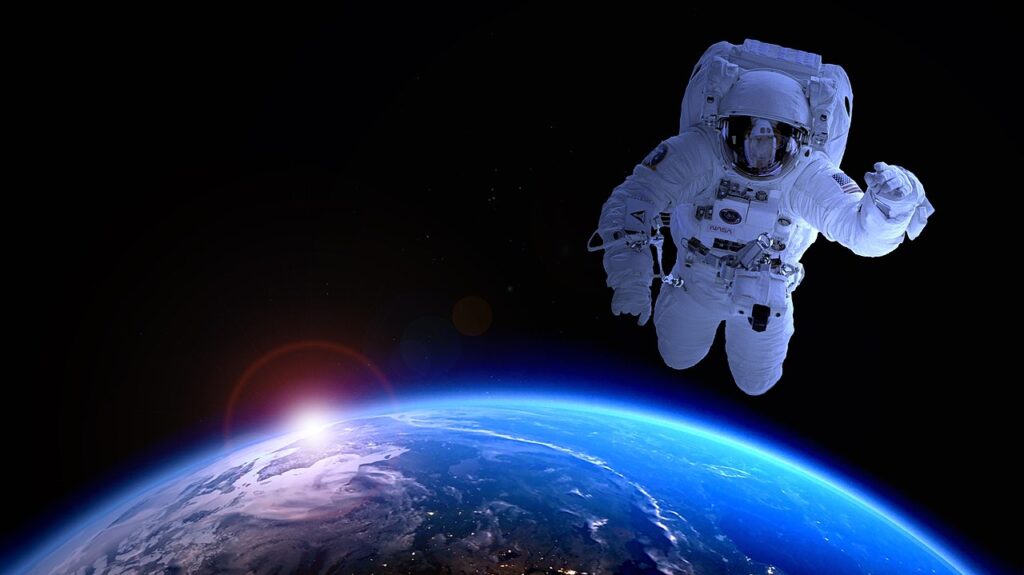
This astronaut in the image symbolizes how we have always been floating towards the unknown. Image: PIRO4D .
Craving more information? Take a look at these recommended TQR articles:
Does the Universe Have a Holographic Memory?
James Webb Space Telescope Advances Search for Signatures of Life
LIGO Technology May Conquer Century-long Quest to Detect Physical Memory in Spacetime

